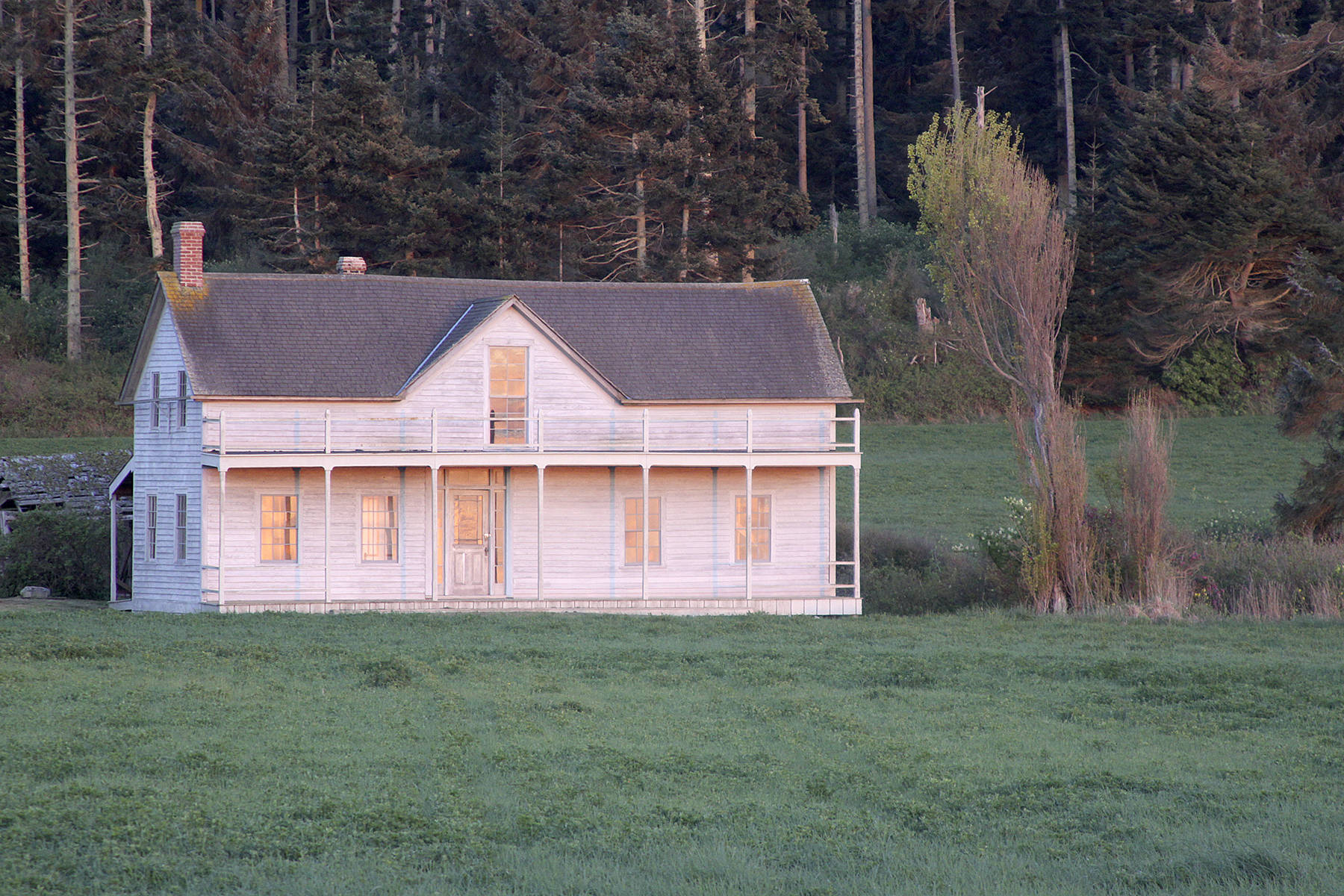The Navy will fund restoration of the historic Ferry House in Central Whidbey as mitigation for the EA-18G Growler aircraft impact on historic properties.
Secretary of the Navy Richard Spencer sent a letter to the Advisory Council on Historic Preservation, or ACHP, an independent federal agency, explaining his response to the ACHP’s recommendations regarding the Growlers’ impact on historic properties, the last step in the Section 106 process under the National Historic Preservation Act.
He wrote that the Navy will contribute $867,000 to restoring the Ferry House, but he declined the ACHP’s recommendations to continue to measure jet noise and further study the effects of noise on the historic properties on Ebey’s Landing National Historical Reserve.
Some of those involved in negotiations with the Navy over mitigation were not happy with the Navy’s response.
Allyson Brooks, the state Historic Preservation Officer, said in a statement that the Navy rejected most of ACHP’s recommendations.
“Specifically, we were hoping for precise noise monitoring among other recommendations, including continued work with stakeholders,” Brooks wrote.
The Sound Defense Alliance said in a statement that the Navy is offering “no actual mitigation or actual monitoring” and that the response ignores input from the community and elected officials.
“They have proven that they are not interested in listening or being a good neighbor,” stated Maryon Attwood, chairwoman of the Sound Defense Alliance.
Speaking on his own behalf, Ebey’s Landing Trust Board member Fran Einterz calls it “a pittance” and pointed out that the money for the Ferry House will go to the National Park Service, which owns just 4 percent of the reserve.
U.S. Rep. Rick Larsen issued a statement Tuesday.
“I am disappointed the Navy did not return to mitigation discussions with the community,” Larsen wrote. “I will continue to push for the Navy to develop a program to conduct noise monitoring at points of interest in Coupeville and reduce the impacts of noise on the community.”
Issuance of the letter clears the way for Spencer to make a final decision on the number of Growlers at Naval Air Station Whidbey Island and how aircraft carrier landing practice will be divided between the Ault Field and Outlying Field Coupeville runways.
The preferred alternative under the Environmental Impact Statement would direct 80 percent of practice to OLF Coupeville, which would be a dramatic increase.
The response states that the “operational conditions” resulting from the increase in Growler practice “would be similar” to the conditions when Ebey’s Landing was created in 1978, which the Sound Defense Alliance disputes.
Spencer emphasized the ways in which the Navy agrees with the Advisory Council on Historic Preservation, or ACHP, and points out the years of work the Navy has done under the National Environmental Policy Act to study the impacts of Growlers, reach out to the community and research technological solutions.
“I am committed to ensuring that the Navy remains a good neighbor with the local communities surrounding our installations while at the same time meeting our urgent national defense priorities,” the letter states.
NAS Whidbey released a statement that echoes the secretary’s words. A representative of the Navy League did not respond for comment by deadline.
After it was determined that an increase in Growlers would have an indirect, adverse effect on the Central Whidbey historic district, the Navy went through a process governed by Section 106 of the National Historic Preservation Act. The Navy negotiated with interested parties in an effort to come up with appropriate mitigation.
The Navy’s final offer was $1 million for restoration of the Ferry House. The Navy terminated discussions Nov. 30 because of an impasse on the “type and amount of commensurate mitigation precluded reaching an agreement on mitigation, the letter states.
Spencer explained in the letter that the Navy refined the estimated cost of restoration projects for the Ferry House and concluded that the Navy will provide the $867,000, plus $20,000 for interpretive historical signs.
The letter addresses other ACHP recommendations.
Spencer declined to follow the recommendation to continue additional noise monitoring efforts and to study the effects on the historic district from private property owners abandoning or not investing in buildings.
Spencer declined the recommendation to examine other means of funding, but strongly supports the community’s exploration of a partnership with the Department of Defense Office of Economic Adjustment to fund preservation projects.
Spencer agreed to pursue partnership opportunities “to promote the long-term preservation of affected historic properties.” The letter states that Navy officials will work with the community to identify potential projects for grants and will voice support for Whidbey projects to decision makers at the Department of Defense.
It will also support Whidbey Island joining a broad Sentinel Landscape effort.
Spencer committed to continue to pursue innovative technologies to reduce aircraft noise. The letter points to the work the Navy has done on implementing Precision Landing Move technology in the aircraft, reducing training by 30 percent.
The Navy is also researching chevrons to reduce the noise.
“Historic preservation has been important to the Navy since the passage of the (National Historic Preservation Act) more than 50 years ago,” Spencer wrote in the conclusion.



